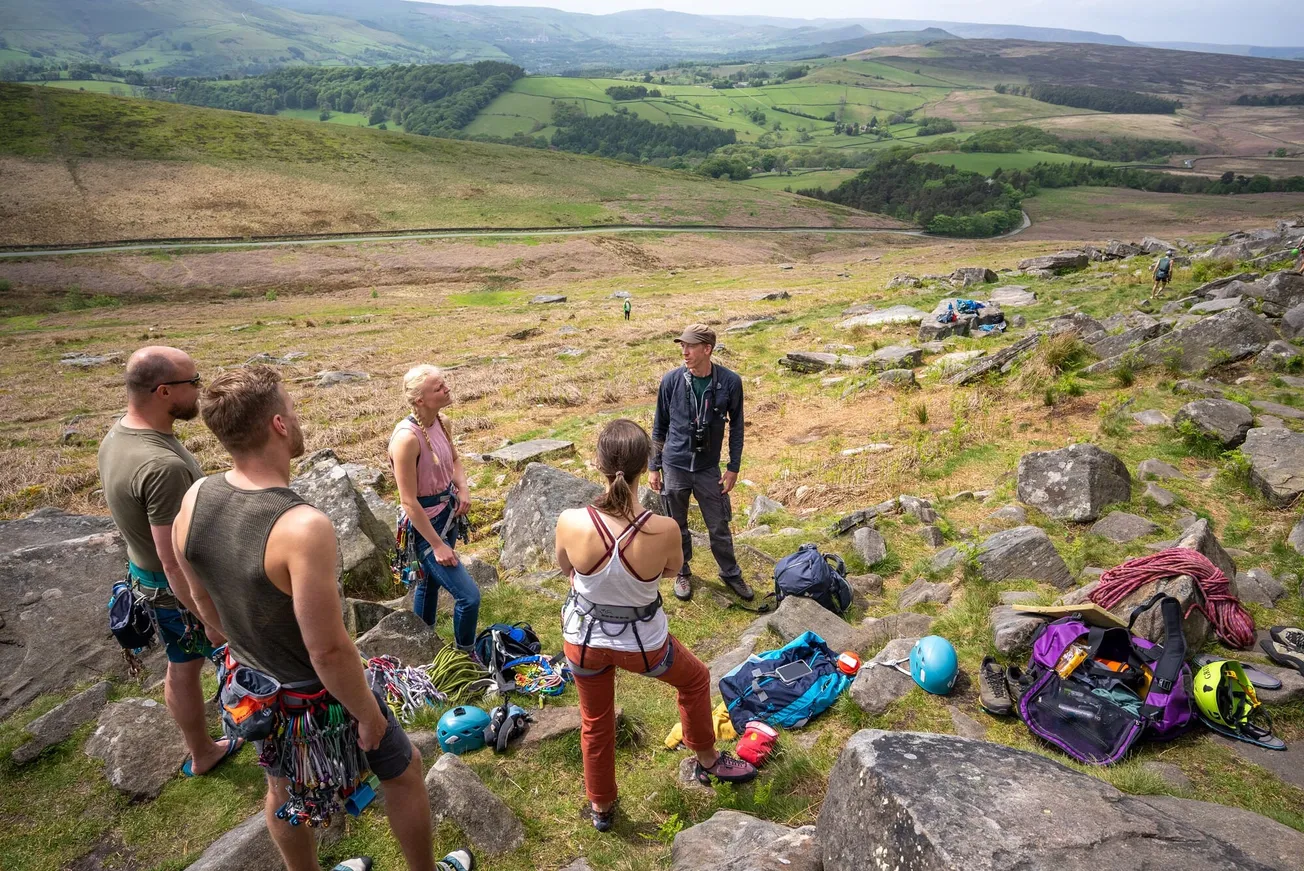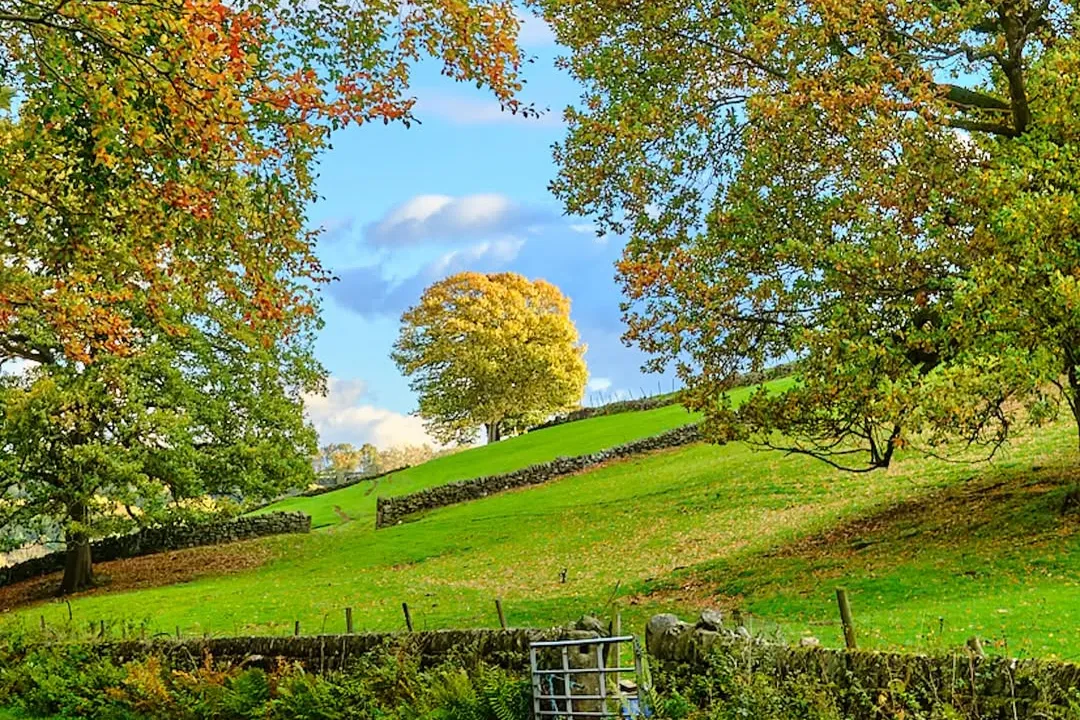By Carey Davies
If you hike into the red-glowing Atlas Mountains of Morocco, up through the mud-brick Berber villages and almond orchards, the arid lowland steppe will eventually give way to great forests of holm oak, cedar, pistachio and pine. Keep climbing and, at around the 1800-metre contour, these woodlands will begin to taper into a mix of stony shrubland and airy forests of twisted juniper. For most of the year, this high and dry domain is where you will find the ring ouzel, or ‘mountain blackbird’. But don’t expect to catch a glimpse of these birds too easily. Typically a people-wary creature, the presence of ring ouzels is considered a key indicator of ‘wilderness’ — a sign that human presence has not taken an unduly heavy toll on the natural fabric of a given landscape.
You might be surprised, then, to find these birds within easy reach of Sheffield’s western fringes. Every March, ring ouzels leave their high haunts in Morocco, Algeria or southern Spain and undertake a spectacular migration — and some of them will end up right here in the often-crowded countryside just outside the city.
The birds fly as much as 4,000 miles to reach their breeding grounds in northern Europe, seeking scrubby and grassy ground with ready access to worms and other invertebrates to feed their young. Typically, they head for wild and lonely places: Scandinavian mountains, the Scottish Highlands or the Lake District. But a number of ring ouzels will also alight on the Peak District’s Eastern Edges — the string of Millstone Grit escarpments that run for around 25 miles along the eastern skyline of the Derwent Valley. Often they tuck their nests into ledges and cracks that would otherwise provide the holds on some of the busiest and most popular climbing routes in the UK, and possibly the world.

As much as Sheffielders love Peak District honeypots like the edges of Stanage, Burbage and Bamford, the landscape around these places is hardly an unspoilt natural kingdom, beautiful as they may be. Farming, industry and grouse shooting have long since terraformed the countryside and, if you pick a sunny Saturday in August to visit, be prepared to find every car park and roadside verge from Ladybower to Baslow stuffed to bursting.
Yet seemingly against all odds, ring ouzels manage to successfully breed here year after year. They have been shielded on the Eastern Edges and other Peak District crags not by blanket bans on climbing or visiting, but by climbers themselves (more on this later). In the process, people have become devoted guardians of the birds, dedicating huge chunks of their lives to them and undertaking spectacular journeys inspired by their migrations. And the ring ouzels themselves seem to like it here, too, becoming so closely bonded with the landscape that they have even developed their own regional ‘accent’. Bill Gordon, a towering figure in ring ouzel protection in the Peak District, says sonograms have shown “that the birds that come here have their own Derbyshire dialect.”
But there is a problem. After two decades of being lovingly protected by locals, there are signs the population of ring ouzel on the Eastern Edges is slowly disappearing.

A member of the thrush family, the ring ouzel (Turdus torquatus) is a close relative of the blackbird — it can be distinguished from them mainly by the sartorial-looking white crescent across the male’s chest. It’s also less dumpy and has a slightly more urgent disposition than a blackbird as it hops and forages across the ground; its pale-edged feathers give its plumage a rockier texture; and its song is flinty and brisk rather than fluty and melodious. You could see the ring ouzel, not entirely inaccurately, as a blackbird moulded by the mountains.
Bill Gordon, who lived and worked in the shadow of Stanage Edge as a Peak District National Park warden for 34 years, explains how in 1998, the geography department at the University of Leeds designed a range of criteria to measure ‘wilderness’ — and the ring ouzel was one of its indicator species. “So if ring ouzels could breed successfully here, that meant Stanage was, at least in part, a wilderness,” says Gordon. An art teacher in Sheffield before becoming warden of the North Lees estate (which contains a big stretch of Stanage) in 1983, Gordon developed an affinity for the ring ouzels. Upon his retirement as warden in 2017, he was awarded the British Empire Medal for his work to protect the birds.
As Gordon explains, climbers became involved in the protection of the ring ouzels in no small part because they were threatened with losing access to the crags otherwise. It all started back in 1998, he recalls, with the creation of the Stanage Forum, which brought together different stakeholders to agree to a plan for the management of the North Lees estate. “Natural England’s approach would have just been preemptively close off the edges for two months, but climbers were having none of that,” Gordon explains. “The idea became that, if we can find the birds' nest-building, that would become a protected site for the duration they were there. We would put up signs to indicate that that particular route was closed, and climbers would voluntarily observe that restriction. So, to make that feasible, we had to get good at finding where the breeding birds were nesting in real time. It meant a lot of hard work on the ground. Me and Flo, my wife, and a few other people from the Sheffield bird study group, we were constantly monitoring. There were a lot of early mornings and lots of patience.”
The process of winning climbers around to this approach was not straightforward. “In the beginning, a few resisted it,” says Gordon. “But ultimately it was a compromise that the climbing community could get behind, because it maintained access on the principle of using the least restrictive approach. So, in the end, climbers started to take ownership of ring ouzel protection themselves.” Bill Gordon praises the work of Henry Folkard, the long-serving and indefatigable volunteer access coordinator for the British Mountaineering Council’s (BMC) Peak Area, for his work on the Stanage Forum, arguing the case for access on the one hand, while winning around the climbing community through the BMC on the other.

Sheffield-based climber and ecologist Kim Leyland inherited Bill’s mantle in 2016. Such is the level of Leyland’s fascination with these birds, and that of his partner Hannah, that the couple once spent three months following GPS-tagged ring ouzels on their autumn migration from Britain. They travelled by train through Spain and hiked into the mountains to spot the birds along the way, finally meeting them when they arrived back home in Morocco. “It was hard work spotting them,” says Leyland. “They were super flighty, diving into vegetation all the time. But it was amazing to see them in their ‘home’ environment. I’m used to seeing them on the Eastern Edges, when they’re at their lowest altitude, but it was a reminder that they really are a bird of the mountains.”
Leyland was tasked by the Eastern Moors Partnership with overseeing the protection and monitoring of the birds on the whole arc of edges ranging from Curbar to Bamford; the Peak District National Park helped support this endeavour. The expansion entailed recruiting a swathe of volunteers in 2017, most of whom were drawn from the BMC, tasked with keeping an eye on the observance of climbing restrictions and checking nest sites were still being used.
I was a staff member of the BMC at the time, and I took part in this first volunteer cohort, spending a few hours every week watching the birds fly in and out of their nests on Stanage as ruddy-faced runners, arguing couples and laughing friends passed by above, oblivious to the rare animals just a few metres below them.
Forced into stillness by focusing on the comings and goings of the ring ouzel couple, I became closely attuned to the sound palette of the spring landscape: a bright white noise textured with the songs of stonechats, whinchats, wrens, willow warblers, curlews and countless more. I also became acutely aware of disturbances. Dogs off lead were a particular source of stress, and once I had to intervene when a couple strolling along the base of the crag let their labrador root around near a nest, despite the signage nearby. Climbers, says Kim Leyland, are almost always respectful of the signs, but the general public can be more oblivious, perhaps not realising they can have an impact too.
I would often wonder, why do the birds even nest here at all? “It’s a good question,” says Leyland. “In a sense, it’s their only choice. There’s nowhere else to go that doesn’t have people in this neck of the woods. But if I get more into speculation, a simple explanation we’ve often mused on is whether the number of people also keeps predators away.”

Bill Gordon seconds this, adding that the physical impacts of climbers can sometimes actually be beneficial for the birds. Trampling below the crags creates short sward, which makes it easier for them to get at invertebrates in the soil, while the lime in climbers’ chalk has the effect of enriching the ground.
“The ring ouzels’ relationship with people here actually seems more complex than you might think,” says Leyland. “Some of the spots they choose to nest are ridiculously busy. This year there were two or three nests near Upper Burbage Bridge, 20 metres from the car park, while there were other, quieter options nearby. Birds brought up in places like that will have had a background of human noise like cars and massive groups of people for their whole time in the nest, and they return to the same sites later in life to breed. Maybe the population here has just developed a greater tolerance for humanity. People from other areas are always amazed by how close you can get to the ring ouzels here.”
But despite all the best safeguarding efforts, ring ouzel numbers on the Eastern Edges are falling. “This year was a reasonable number of birds arriving but not many stuck around,” says Leyland. “It was the lowest number we’ve had for years. The trend over the last eight years is generally reducing.”
Leyland doesn’t think greater human disturbance is the key culprit for this decline. “There is no clear causal link between the busyness of a place and breeding success,” he says. “Bamford Edge has seen an absolute boom in popularity in recent years because it’s become an Instagram destination; it’s probably one of the busiest edges now. But there were five or six nests on there this year, which is one of the few places the birds had a really good season.”

Restrictions are still being observed, volunteer numbers are still strong, and when birds do nest on the Edges, their productivity is still high. “The issue is that fewer birds are choosing to nest here in the first place,” says Leyland.
Why? “We’ve seen over the last 20 years that ring ouzels have disappeared from Exmoor, Dartmoor, Shropshire, and the south-west Peak District,” says Leyland. “I think we’re seeing a general climate-driven shift northwards. We’ve been an outlier on the southern edge of the ring ouzel’s range for a few years. It’s sad and unfortunate, but they’re an upland species who are particularly sensitive to climate change.” According to 2011 research, across the northern hemisphere, the distribution of species is gradually shifting north at a rate of 10 miles per year as the climate warms.
Ring ouzels numbers remain healthy internationally, but the prospect of their climate-driven disappearance from so many parts of Britain is still a poignant and alarming glimpse of how climate change can drive biodiversity loss. Many species migrating because of climate change will (as plenty already have) run out of road.
Even so, the protection of ring ouzels on the Peak District fringes of Sheffield stands as an exemplary example of natural guardianship and ‘wild service’ — of how, in an anthropogenic world, there can still be room for the wilderness, even right in our midst.
Gordon is sombre on the ring ouzel’s prospects in the Peak District, but decades of watching them on the Eastern Edges has also given him a deep respect for their resilience. “I developed such total admiration for these birds,” he says. “The way they travel all the way from Morocco. That total bond between the male and female. We used to anthropomorphise it as love, but we knew that it was their urge to produce the next generation. I just felt, and still feel, a total admiration for these birds that are fighting for their survival.”
Comments
How to comment:
If you are already a member,
click here to sign in
and leave a comment.
If you aren't a member,
sign up here
to be able to leave a comment.
To add your photo, click here to create a profile on Gravatar.







